Origin: (Robert Langdon Book 5) Read online
Page 7
“Of course.”
“Perfect. Things are going to be chaotic after the presentation, so you and I will need someplace private to escape the mayhem and talk.” Edmond took out a business card and started writing on the back. “After the presentation, hail a cab and give this card to the driver. Any local driver will understand where to bring you.” He handed Langdon the business card.
Langdon expected to see the address of a local hotel or restaurant on the back. Instead he saw what looked more like a cipher.
BIO-EC346
“I’m sorry, give this to a taxi driver?”
“Yes, he’ll know where to go. I’ll tell security there to expect you, and I’ll be along as quickly as possible.”
Security? Langdon frowned, wondering if BIO-EC346 were the code name for some secret science club.
“It’s a painfully simple code, my friend.” He winked. “You of all people should be able to crack it. And, by the way, just so you’re not taken off guard, you’ll be playing a role in my announcement tonight.”
Langdon was surprised. “What kind of role?”
“Don’t worry. You won’t have to do a thing.”
With that, Edmond Kirsch headed across the floor toward the spiral’s exit. “I’ve got to dash backstage—but Winston will guide you up.” He paused in the doorway and turned. “I’ll see you after the event. And let’s hope you’re right about Valdespino.”
“Edmond, relax. Focus on your presentation. You’re not in any danger from religious clerics,” Langdon assured him.
Kirsch didn’t look convinced. “You may feel differently, Robert, when you hear what I’m about to say.”
CHAPTER 10
THE HOLY SEAT of the Roman Catholic Archdiocese of Madrid—Catedral de la Almudena—is a robust neoclassical cathedral situated adjacent to Madrid’s Royal Palace. Built on the site of an ancient mosque, Almudena Cathedral derives its name from the Arabic al-mudayna, meaning “citadel.”
According to legend, when Alfonso VI seized Madrid back from the Muslims in 1083, he became fixated on relocating a precious lost icon of the Virgin Mary that had been entombed in the walls of the citadel for safekeeping. Unable to locate the hidden Virgin, Alfonso prayed intently until a section of the citadel’s wall exploded, falling away, and revealed the icon inside, still lit by the burning candles with which she had been entombed centuries ago.
Today, the Virgin of Almudena is the patron saint of Madrid, and pilgrims and tourists alike flock to mass at Almudena Cathedral for the privilege of praying before her likeness. The church’s dramatic location—sharing the Royal Palace’s main plaza—provides an added attraction to churchgoers: the possibility of glimpsing royalty coming or going from the palace.
Tonight, deep inside the cathedral, a young acolyte was rushing through the hallway in a panic.
Where is Bishop Valdespino?!
Services are about to begin!
For decades, Bishop Antonio Valdespino had been head priest and overseer of this cathedral. A longtime friend and spiritual counselor to the king, Valdespino was an outspoken and devout traditionalist with almost no tolerance for modernization. Incredibly, the eighty-three-year-old bishop still donned ankle shackles during Holy Week and joined the faithful carrying icons through the city streets.
Valdespino, of all people, is never late for mass.
The acolyte had been with the bishop twenty minutes ago in the vestry, assisting him with his robes as usual. Just as they finished, the bishop had received a text and, without a word, had hurried out.
Where did he go?
Having searched the sanctuary, the vestry, and even the bishop’s private restroom, the acolyte was now running at a sprint down the hallway to the administrative section of the cathedral to check the bishop’s office.
He heard a pipe organ thunder to life in the distance.
The processional hymn is starting!
The acolyte skidded to a stop outside the bishop’s private office, startled to see a shaft of light beneath his closed door. He’s here?!
The acolyte knocked quietly. “¿Excelencia Reverendísima?”
No answer.
Knocking louder, he called out, “¡¿Su Excelencia?!”
Still nothing.
Fearing for the old man’s health, the acolyte turned the handle and pushed open the door.
¡Cielos! The acolyte gasped as he peered into the private space.
Bishop Valdespino was seated at his mahogany desk, staring into the glow of a laptop computer. His holy miter was still on his head, his chasuble wadded beneath him, and his crozier staff propped unceremoniously against the wall.
The acolyte cleared his throat. “La santa misa está—”
“Preparada,” the bishop interrupted, his eyes never moving from the screen. “Padre Derida me sustituye.”
The acolyte stared in bewilderment. Father Derida is substituting? A junior priest overseeing Saturday-night mass was highly irregular.
“¡Vete ya!” Valdespino snapped without looking up. “Y cierra la puerta.”
Fearful, the boy did as he was told, leaving immediately and closing the door as he went.
Hurrying back toward the sounds of the pipe organ, the acolyte wondered what the bishop could possibly be viewing on his computer that would pull his mind so far from his duties to God.
At that moment, Admiral Ávila was snaking through the growing crowd in the Guggenheim’s atrium, puzzled to see guests chatting with their sleek headsets. Apparently the audio tour of the museum was a two-way conversation.
He felt glad to have jettisoned the device.
No distractions tonight.
He checked his watch and eyed the elevators. They were already crowded with guests heading to the main event upstairs, so Ávila opted for the stairs. As he climbed, he felt the same tremor of incredulity he had felt last night. Have I really become a man capable of killing? The godless souls who had ripped away his wife and child had transformed him. My actions are sanctioned by a higher authority, he reminded himself. There is righteousness in what I do.
As Ávila reached the first landing, his gaze was drawn to a woman on a nearby suspended catwalk. Spain’s newest celebrity, he thought, eyeing the famous beauty.
She wore a formfitting white dress with a black diagonal stripe that ran elegantly across her torso. Her slender figure, lush dark hair, and graceful carriage were easy to admire, and Ávila noticed he was not the only one with eyes on her.
In addition to the approving glances of the other guests, the woman in white held the full attention of two sleek security officers who shadowed her closely. The men moved with the wary confidence of panthers and wore matching blue blazers with embroidered crests and the large initials GR.
Ávila was not surprised by their presence, and yet the sight of them made his pulse quicken. As a former member of the Spanish armed forces, he knew full well what GR signified. These two security escorts would be armed and as well trained as any bodyguards on earth.
If they are present, I must take every precaution, Ávila told himself.
“Hey!” a man’s voice barked, directly behind him.
Ávila spun around.
A paunchy man in a tuxedo and a black cowboy hat was smiling broadly at him. “Great costume!” the man said, pointing to Ávila’s military uniform. “Where does someone get something like that?”
Ávila stared, fists clenching reflexively. Through a lifetime of service and sacrifice, he thought. “No hablo inglés,” Ávila replied with a shrug, and continued up the stairs.
On the second floor, Ávila found a long hallway and followed signs to a remote restroom at the far end. He was about to enter when the lights throughout the museum faded off and on—the first gentle nudge urging guests to start heading upstairs for the presentation.
Ávila entered the deserted restroom, chose the last stall, and locked himself inside. Alone now, he felt the familiar demons trying to surface within him, threatening to drag him
back into the abyss.
Five years, and the memories still haunt me.
Angrily, Ávila pushed the horrors from his mind and retrieved the rosary beads from his pocket. Gently, he looped them over the coat hook on the door. As the beads and crucifix swung peacefully before him, he admired his handiwork. The devout might be horrified that anyone could defile the rosary by creating an object like this. Even so, Ávila had been assured by the Regent that desperate times afforded a certain flexibility in the rules of absolution.
When the cause is this holy, the Regent had promised, God’s forgiveness is guaranteed.
As with the protection of his soul, Ávila’s body had also been guaranteed deliverance from evil. He glanced down at the tattoo on his palm.
Like the ancient crismón of Christ, the icon was a symbol constructed entirely of letters. Ávila had inscribed it there three days ago with iron gall and a needle, precisely as he had been instructed, and the spot was still tender and red. If he were captured, the Regent assured him, all he had to do was make his palm visible to his captors, and within hours, he would be released.
We occupy the highest levels of government, the Regent had said.
Ávila had already witnessed their startling influence, and it felt like a mantle of protection all around him. There still exist those who respect the ancient ways. One day Ávila hoped to join the ranks of this elite, but for the moment, he felt honored to play any role at all.
In the solitude of the bathroom, Ávila took out his phone and dialed the secure number he had been given.
The voice on the line answered on the first ring. “¿Sí?”
“Estoy en posición,” Ávila replied, awaiting final instructions.
“Bien,” the Regent said. “Tendrás una sola oportunidad. Aprovecharla será crucial.” You will have only one chance. Seizing it will be crucial.
CHAPTER 11
THIRTY KILOMETERS UP the coastline from Dubai’s glistening skyscrapers, man-made islands, and celebrity party villas lies the city of Sharjah—the ultraconservative Islamic cultural capital of the United Arab Emirates.
With more than six hundred mosques and the region’s finest universities, Sharjah stands as a pinnacle of spirituality and learning—a position fueled by massive oil reserves and a ruler who places the education of his people above all else.
Tonight, the family of Sharjah’s beloved allamah, Syed al-Fadl, had gathered in private to hold a vigil. Instead of praying the traditional tahajjud, the night vigil prayer, they prayed for the return of their cherished father, uncle, and husband, who had mysteriously disappeared yesterday without a trace.
The local press had just announced that one of Syed’s colleagues was claiming that the normally composed allamah had seemed “strangely agitated” upon his return from the Parliament of the World’s Religions two days ago. In addition, the colleague said he had overheard Syed engaged in a rare heated phone argument shortly after his return. The dispute was in English, and therefore indecipherable to him, but the colleague swore he had heard Syed repeatedly mention a single name.
Edmond Kirsch.
CHAPTER 12
LANGDON’S THOUGHTS SWIRLED as he emerged from the spiral structure. His conversation with Kirsch had been both exciting and alarming. Whether or not Kirsch’s claims were exaggerated, the computer scientist clearly had discovered something that he believed would cause a paradigm shift in the world.
A discovery as important as the findings of Copernicus?
When Langdon finally emerged from the coiled sculpture, he felt slightly dizzy. He retrieved the headset he had left on the floor earlier.
“Winston?” he said, pulling on the device. “Hello?”
A faint click, and the computerized British docent was back. “Hello, Professor. Yes, I’m here. Mr. Kirsch asked me to take you up the service elevator because time is too short to return to the atrium. He also thought you would appreciate our oversized service elevator.”
“Nice of him. He knows I’m claustrophobic.”
“Now I do too. And I will not forget it.”
Winston guided Langdon through the side door into a cement hallway and elevator bay. As promised, the elevator carriage was enormous, clearly designed to transport oversized artwork.
“Top button,” Winston said as Langdon stepped inside. “Third floor.”
When they arrived at their destination, Langdon stepped out.
“Righto,” Winston’s cheery voice chimed in Langdon’s head. “We’ll go through the gallery on your left. It’s the most direct way to the auditorium.”
Langdon followed Winston’s directions through an expansive gallery displaying a series of bizarre art installations: a steel cannon that apparently shot gooey globs of red wax at a white wall; a wire-mesh canoe that clearly would not float; an entire miniature city made of burnished metal blocks.
As they crossed the gallery toward the exit, Langdon found himself staring in utter bewilderment at a massive piece that dominated the space.
It’s official, he decided, I’ve found the strangest piece in this museum.
Spanning the width of the entire room, a multitude of timber wolves were dynamically posed, sprinting in a long line across the gallery where they leaped high in the air and collided violently with a transparent glass wall, resulting in a mounting pile of dead wolves.
“It’s called Head On,” Winston offered, unprompted. “Ninety-nine wolves racing blindly into a wall to symbolize a herd mentality, a lack of courage in diverging from the norm.”
The irony of the symbolism struck Langdon. I suspect Edmond will be diverging dramatically from the norm this evening.
“Now, if you’ll continue straight ahead,” Winston said, “you’ll find the exit to the left of that colorful diamond-shaped piece. The artist is one of Edmond’s favorites.”
Langdon spotted the brightly colored painting up ahead and instantly recognized the trademark squiggles, primary colors, and playful floating eye.
Joan Miró, Langdon thought, having always liked the famous Barcelonan’s playful work, which felt like a cross between a child’s coloring book and a surrealist stained-glass window.
As Langdon drew even with the piece, however, he stopped short, startled to see that the surface was utterly smooth, with no visible brush-strokes. “It’s a reproduction?”
“No, that’s the original,” Winston replied.
Langdon looked closer. The work had clearly been printed by a large-format printer. “Winston, this is a print. It’s not even on canvas.”
“I don’t work on canvas,” Winston replied. “I create art virtually, and then Edmond prints it for me.”
“Hold on,” Langdon said in disbelief. “This is yours?”
“Yes, I tried to mimic the style of Joan Miró.”
“I can see that,” Langdon said. “You even signed it—Miró.”
“No,” Winston said. “Look again. I signed it Miro—with no accent. In Spanish, the word miro means ‘I look at.’”
Clever, Langdon had to admit, seeing the single Miró-style eye looking at the viewer from the center of Winston’s piece.
“Edmond asked me to create a self-portrait, and this is what I came up with.”
This is your self-portrait? Langdon glanced again at the collection of uneven squiggles. You must be a very strange-looking computer.
Langdon had recently read about Edmond’s growing excitement for teaching computers to create algorithmic art—that is, art generated by highly complex computer programs. It raised an uncomfortable question: When a computer creates art, who is the artist—the computer or the programmer? At MIT, a recent exhibit of highly accomplished algorithmic art had put an awkward spin on the Harvard humanities course: Is Art What Makes Us Human?
“I compose music too,” Winston chimed. “You should ask Edmond to play some for you later, should you be curious. At the moment, however, you do need to hurry. The presentation is starting shortly.”
Langdon left t
he gallery and found himself on a high catwalk overlooking the main atrium. On the opposite side of the cavernous space, docents were hustling the last few straggling guests out of the elevators, herding them in Langdon’s direction toward a doorway up ahead.
“Tonight’s program is scheduled to begin in just a few minutes,” Winston said. “Do you see the entrance to the presentation space?”
“I do. It’s just ahead.”
“Excellent. One final point. As you enter, you will see collection bins for headsets. Edmond asked that you not return your unit, but rather keep it. This way, after the program, I will be able to guide you out of the museum through a back door, where you’ll avoid the crowds and be sure to find a taxi.”
Langdon pictured the strange series of letters and numbers that Edmond had scrawled on the business card, telling him to give it to the taxi driver. “Winston, all Edmond wrote was ‘BIO-EC346.’ He called it a painfully simple code.”
“He speaks the truth,” Winston replied quickly. “Now, Professor, the program is about to begin. I do hope you enjoy Mr. Kirsch’s presentation, and I look forward to assisting you afterward.”
With an abrupt click, Winston was gone.
Langdon neared the entry doors, removed his headset, and slipped the tiny device into his jacket pocket. Then he hurried through the entrance with the last few guests just as the doors closed behind him.
Once again, he found himself in an unexpected space.
We’re standing up for the presentation?
Langdon had imagined the crowd gathering in a comfortable sit-down auditorium to hear Edmond’s announcement, but instead, hundreds of guests stood packed into a cramped, whitewashed gallery space. The room contained no visible artwork and no seating—just a podium at the far wall, flanked by a large LCD screen that read:
Live program begins in 2 minutes 07 seconds
Langdon felt a surge of anticipation, and his eyes continued down the LCD screen to a second line of text, which he needed to read twice:

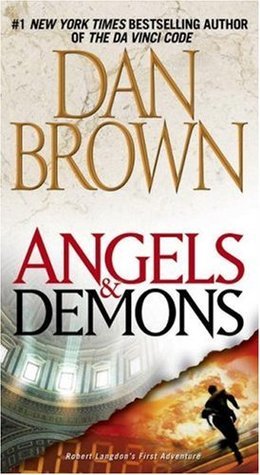 Angels & Demons
Angels & Demons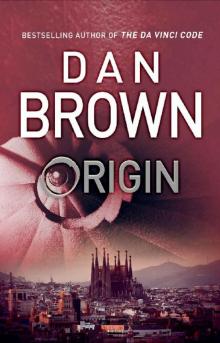 Origin
Origin The Da Vinci Code
The Da Vinci Code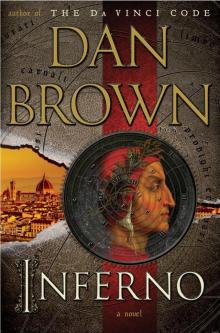 Inferno
Inferno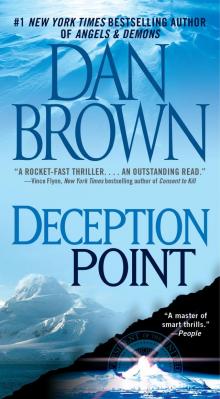 Deception Point
Deception Point Digital Fortress
Digital Fortress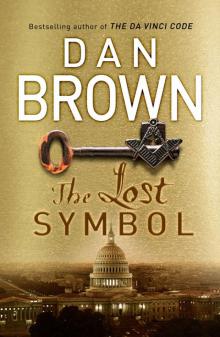 The Lost Symbol
The Lost Symbol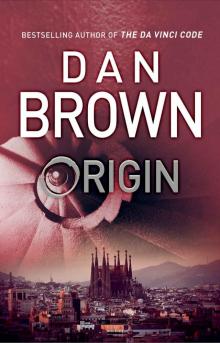 Origin: (Robert Langdon Book 5)
Origin: (Robert Langdon Book 5)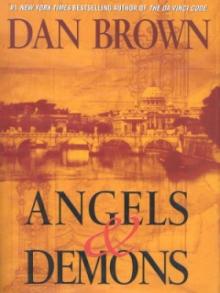 Angles & Demons
Angles & Demons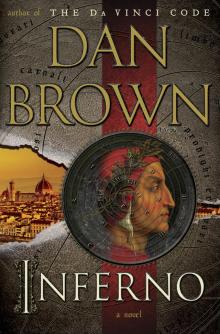 Inferno: A Novel
Inferno: A Novel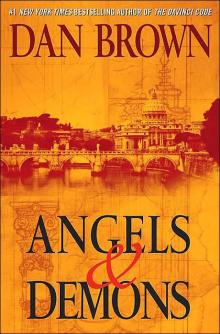 Angels & Demons rl-1
Angels & Demons rl-1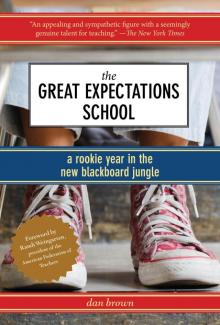 The Great Expectations School
The Great Expectations School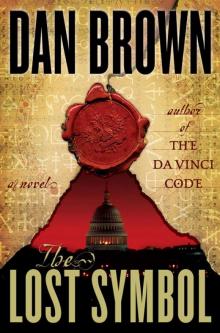 The Lost Symbol rl-3
The Lost Symbol rl-3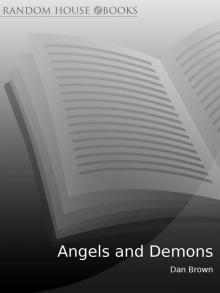 Angels and Demons
Angels and Demons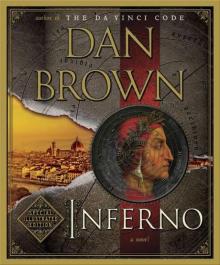 Inferno: Special Illustrated Edition: Featuring Robert Langdon
Inferno: Special Illustrated Edition: Featuring Robert Langdon